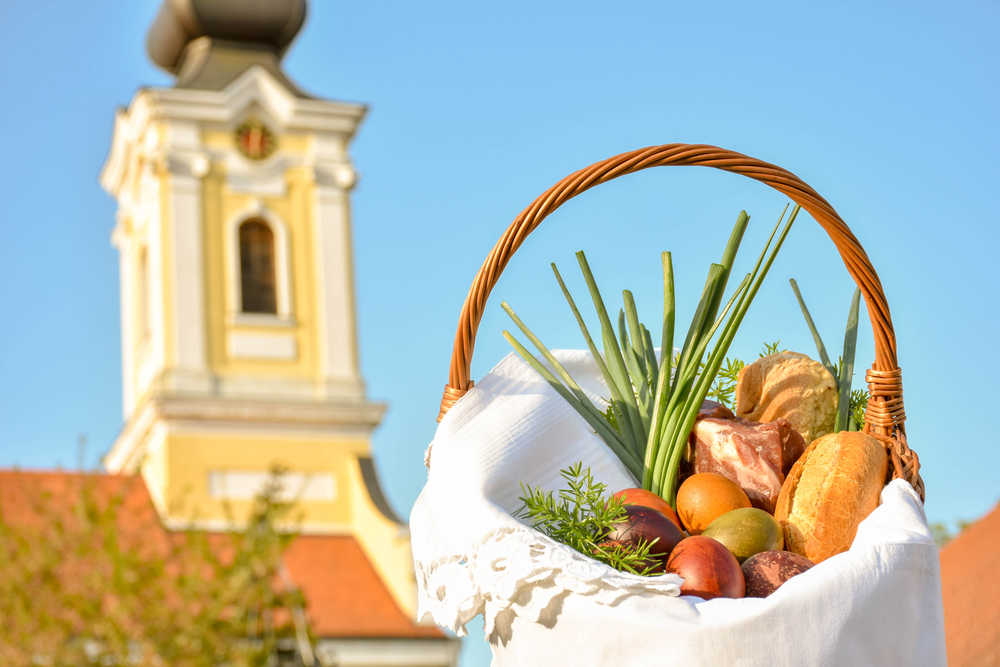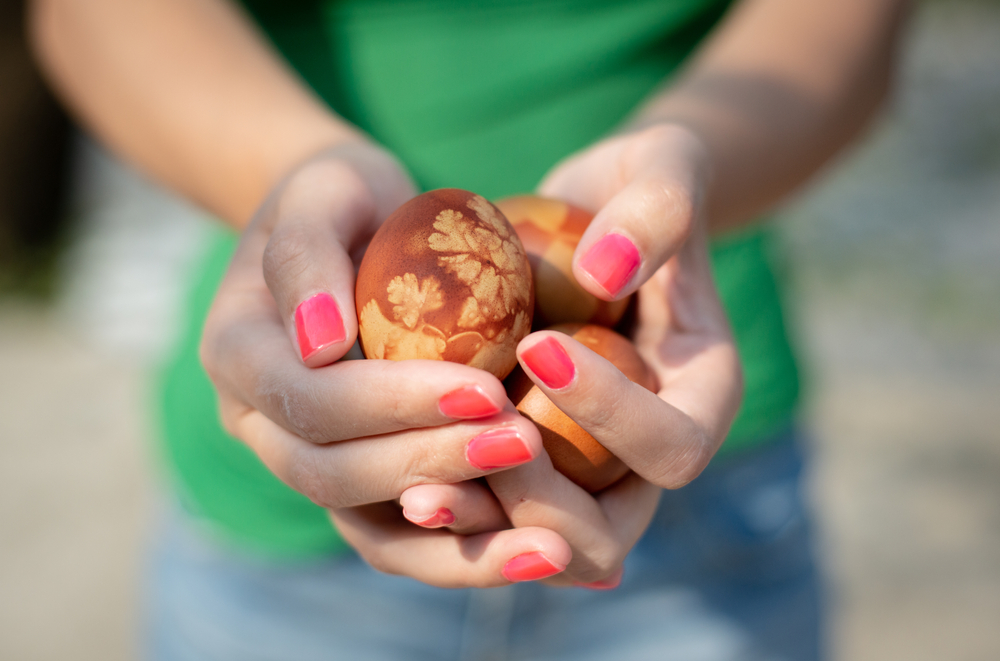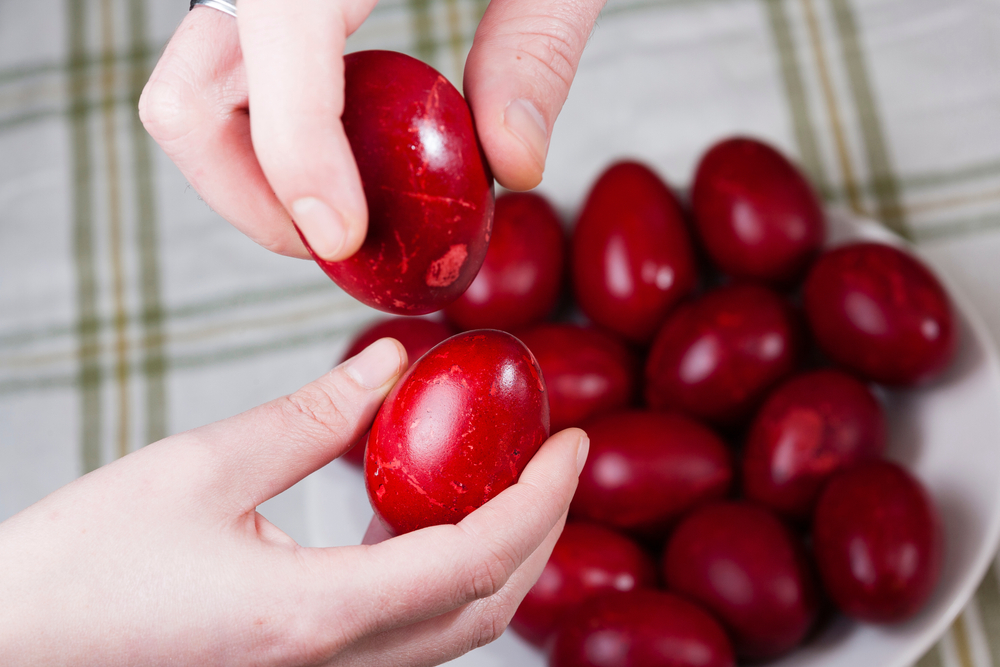When it is the season of Easter in Croatia, you are sure to have a delicious time and see some of the most beautifully decorated eggs in the world.

Thinking of visiting Croatia over Easter? You definitely should! Easter in Croatia is a very important holiday and there are many traditions related to this time of the year. From traditional processions and holy masses to huge quantities of delicious food, all is dedicated to bringing the family together, celebrating life, love and abundance, and honouring the resurrection of Jesus.
If you are wondering about other important info related to Easter in Croatia, are things closed, which days are public holidays, and why is Easter Monday celebrated in Croatia, read our guide on how to best appreciate this season and what not to miss.
Easter egg traditions in Croatia
Easter egg decorating is very popular in Croatia. Like with all other important holidays, the rich culture of this small country means there are many different and unique traditions in Croatia. Easter traditions vary from region to region, but colouring eggs is common throughout the entire country. These eggs are known in Croatia by the name of pisanice. There are many different techniques of colouring and decorating pisanice, and today many people will opt for a quick solution and simply buy ready-made egg colours and stickers with traditional Easter motives such as Easter bunnies, baby chickens, flowers, crosses and doves.

Colouring eggs with onion skins
However, the traditional method is to use natural pigments, usually from vegetables and other plants, and decorate the eggs with freshly picked leaves and flowers.
There are many colours to choose from, but the most common colour used for decorating the eggs is red, from onion skins. The whiter the original egg, the more intense the final colour will be, however, white eggs are not very common in Croatia.
Other common natural pigments are:
- green – various vividly coloured plants such as spinach and parsley
- brown – coffee, walnut shells, black tea
- yellow and orange – carrots, chilli powder, red pepper, saffron, turmeric
- blue – red cabbage, purple onions, black grapes, blueberries
- red and pink – beetroot, cranberries, pomegranate, red grapes.
If you want to try colouring and decorating Easter eggs the traditional Croatian way, you can easily do it at home. It is very cheap and simple and the results are beautiful. You can simply boil the eggs with the pigments of your choice, or you can try the slightly more complicated version of making leaf and flower prints on the eggs.
You will need the following:
- pigment of choice
- 10-12 eggs
- wide pot
- leaves or flowers for decorating
- nylon socks
- rope
- white vinegar
- some oil or fat.
Take a good amount of onion skins (or whatever pigment you are using), place them in cold water in your pot and boil while you prepare the eggs. Then, place your decorations of choice – for example, parsley or dandelion leaves – on your eggs by adjusting one leaf on each egg, placing the egg in a nylon sock and then securing everything in place with rope.
Remove the pot from heat so that it cools down slightly, add a tablespoon of vinegar and carefully place each egg in the water. Boil them over low heat for around half an hour. Let the eggs cool completely in the pigmented water and finally give the eggs a rub with some oil or bacon for a touch of shine.
All that is left to do is arrange your beautiful eggs in a basket on some grass or hay and offer them to your friends and family.
Gifting eggs
Families will usually make way too many Easter eggs, enough for all the friends, neighbours and relatives. It is customary to give each other eggs as a symbol of love and respect. In Dubrovnik, an engaged girl will give the eggs to her future husband and her future mother-in-law will then bake a braided dough embedded with the egg.
And since all these piles of boiled eggs keep well, you may want to consider them as a simple and nutritious addition to your next camping food list.
Egg fights
There is a fun traditional game enjoyed during the Easter breakfast which is called tucanje jaja (egg tapping). You and your opponent each choose your best egg – there is some skill involved in this and experienced players will know a few hacks. You each hold your egg vertically and the upper egg lightly taps the lower egg. The egg which breaks is the loser, and the whole egg is the winner. The winning egg will then usually challenge the other eggs around the table. A sneaky trick is to use a wooden egg, so you always win. And a variation of the game is to tap somebody on the forehead with the egg! This is usually done among brothers and sisters.

Giant eggs
In the Northern Croatian city of Koprivnica, giant Easter eggs are traditionally displayed as part of an outdoor exhibition titled Pisanica od srca (Easter egg from the heart). These impressive eggs are over 2 metres high and 1 metre wide, carefully painted by artists as a symbol of friendship and joy of Easter. They are also given as gifts to be displayed across the world, and Pope Benedict XVI has received one in the Vatican. Hand-painted, giant Easter eggs surrounded with a picket fence can also be found in front of the Zagreb Cathedral.
What to eat in Croatia at Easter?
Good Friday is Lent day, usually reserved for fish and other low-fat foods. The following day, believers will attend the Holy Mass in the evening and bring with them baskets full of food to be blessed and eaten on Easter morning. Easter Sunday is reserved for day-long feasting, full of traditionally prepared delicacies. Istrians will enjoy jajarice – braided buns with a coloured egg on top. In the northern region of Zagorje you will find vrtanji – a type of savoury bread made with leftover water from cooking Easter ham. Slavonian bagels are simple circular buns made from only three ingredients: eggs, flour and a bit of salt.
The staple ingredients in the entire country are: boiled eggs, cooked ham, sweet bread called pinca with a cross cut onto the surface, spring onions, radishes and horseradish. This is accompanied with a giant bowl of Olivier salad or, as we call it in Croatian, French salad.
Even though nobody is hungry by lunch because of the enormous breakfast, there will still be a huge meat-based feast, slightly differing from one region to another.
Easter Monday marks the first of Jesus’s 40 days on Earth before he ascended to heaven. It is a day of rest and reflection. The majority of shops and businesses are closed on both Easter and Easter Monday.
How to wish a happy Easter in Croatian?
The word Uskrs is a bit tricky to pronounce for most non-Slavic speakers, but if you want to wish Happy Easter to your Croatian friends, a simple Sretan Uskrs (pronounced SREH – tahn OOHS – kers) is the most common way to do it.
A longer version would be Sretan i blagoslovljen Uskrs (Happy and blessed Easter) which is pronounced ‘SREH – tahn e bla – goh – SLOV – lyen OOHS – kers’.
Easter cards sent to distant friends and relatives will usually feature rhymed verses and blessings.
And if we haven’t already convinced you to come visit Croatia this Easter, have a look at our awesome Eastr deals this year and experience the true spirit of Easter in Croatia!